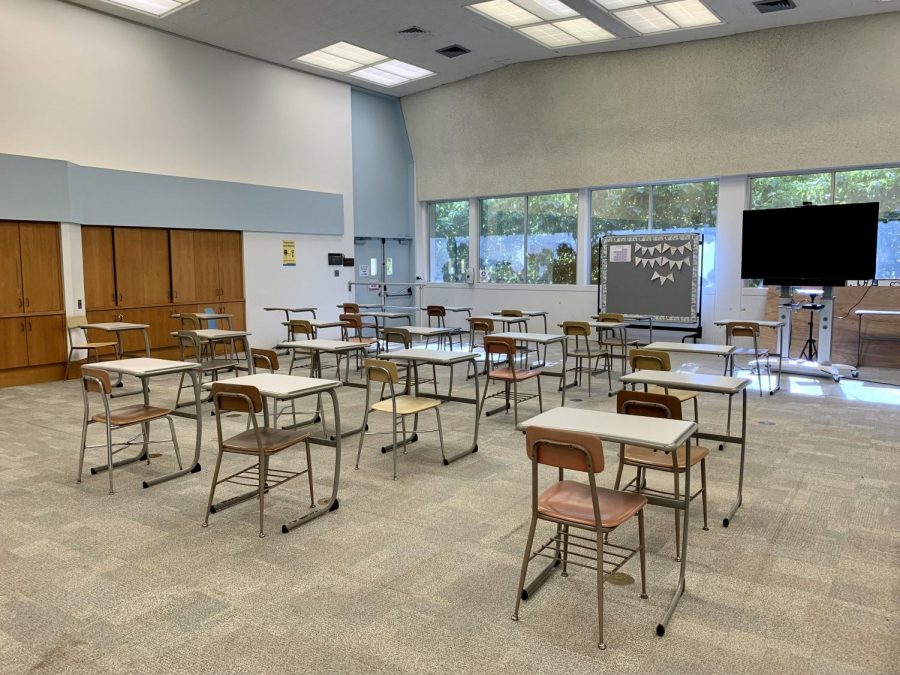It might be, explains Ryan Scudder, Associate Director of College Counseling at Punahou School. The COVID-19 pandemic had a major impact on college visits, but the downward trend in student attendance began years earlier. Other factors that may have drawn student attention away from this classic aspect of college admissions include busy schedules and an abundance of information that can be accessed online. College visits are a major opportunity for high school juniors and seniors to learn about colleges and demonstrate their interest, but students who didn’t attend any this year shouldn’t be too worried, because other opportunities to do so are coming up.
The following interview has been edited.
Ezra Levinson: Mr. Scudder, thank you so much for taking the time to talk with me today. I’m hoping to get an idea of what effect COVID-19 has had on college visits at Punahou, and what that might mean for students who are preparing to apply to colleges. Before we get into that, though – can you tell me what exactly a college visit is?
Ryan Scudder: Sure. The whole purpose of a college visit is for Punahou juniors and seniors to be exposed to what that college has to offer. For our juniors, we present it as an opportunity to explore your options and kind of see what’s out there. Many of our students don’t have the luxury of visiting college campuses on the mainland, so it can be hard to get a sense of who the colleges are and what they offer. Attending a presentation by a visitor from a college creates an opportunity to connect to that institution. Also, for the majority of colleges, the representative who’s presenting to students typically is the same admissions officer who reads the applications for the state of Hawai‘i, for Punahou students as well as everybody else applying from Hawai‘i. So that added connection, that added opportunity for the admissions officer to connect a face to the name on an application really speaks volumes. It allows our students just one more opportunity to build that bridge to the college.
EL: So if college visits have a format that’s really centered around face-to-face interaction, what has happened to that format as a result of COVID-19? What’s changed?
RS: Before COVID all college visits at Punahou were in person. We hosted about 200 colleges and universities each fall, from August through November, which is the same timeframe we’ve operated on this year. But then with the pandemic, last school year everything had to be virtual. And it was a forced change. We wouldn’t have done it if it wasn’t because of the pandemic. Doing virtual presentations was a whole new landscape. And I have to say that the change has allowed more colleges to have the opportunity to visit our institution because, to put it simply, they don’t have to travel. The cost of travel is eliminated, and I feel like it’s opened up the opportunity for more schools to visit. But because everything was online in the fall semester of the 2020-2021 school year, college visits were just one more thing for students to look at on their screens. I’ll admit, attendance was, you know… we had to keep drumming up excitement for it.
EL: I can imagine.
RS: And that’s typical in any year, even before the pandemic. With in-person too, there were a lot of presentations with maybe one, maybe two students in them, especially for the not-so-popular schools. But then in the pandemic, of course, the student really had to make that effort to click that link and join the presentation. We initially tried to record presentations so that students could watch them later if they couldn’t attend, but that became such an added burden upon our staff that we decided to stop. If the student can make it, that’s great; if they can’t, they can find other resources to get more information from that school.
EL: Which is the way it is when college visits are in person, too, right?
RS: Right. They either go, or they have to find out the information through another means.
EL: So that was last school year. What about this year?
RS: This year, we’ve done a hybrid of virtual and in-person. We value face-to-face whenever it’s possible, so we’ve welcomed the college visitors back to campus. But some colleges have mandates where their admissions officers just couldn’t travel, and that is what it is, so we still let those colleges sign up for virtual presentations. Attendance-wise, yeah, I would say it’s gone down and down. I wish I had long-term numbers to show you, but through the years it has gone down. And I think that as much as we value the college visit presentations, there are a whole lot of other opportunities to get information. College visits have always been the traditional way of colleges presenting themselves, but I think this pandemic has forced some changes to that practice.
EL: So even if the pandemic might have accelerated things, you think the decline in attendance might have been a trend before that?
RS: Yes. And I think a lot of it is just a result of the fact that we have different students over time, and their priorities change. School schedule, too, is another thing that we have to manage. At the beginning of this year, we didn’t know when to schedule college visits, you know? Like, what will be the times at which the most juniors and seniors might be available? The times we ended up choosing this year turned out to be the times where the majority of students are in class, so then the students really had to make that effort to get out of class to attend.
EL: Right, and you mentioned that there are other ways for students to get the information, so missing a class might not be the most appealing option.
RS: Exactly.
EL: If students are moving away from college visits, and instead they’re choosing to look at a college’s website or looking at third-party websites with college reviews and information, would you say they’re losing anything that they would get from attending a college visit?
RS: There’s lots of good information that’s out there. I feel like it’s overwhelming how much information you can find. I actually think this has been a benefit of the pandemic, that it really made colleges offer more opportunities, like virtual campus tours. If you go to a college’s admissions page, you could probably sign up for, like, info sessions that they do weekly in various time zones. So it’s very accommodating. You know, they never did that before, because they didn’t have to. But some schools do track demonstrated interest, which attending a college visit can be a big part of.
EL: Can you say a little more about that?
RS: The concept of demonstrated interest isn’t something that all colleges operate on. But some schools really have a checklist, and they’re watching how engaged a student is with their institution. For those schools, a college visit is an opportunity that a student would want to take advantage of, whether it’s virtual or in person.
EL: What type of school is looking at demonstrated interest, as opposed to the type of school where it might not be as much of a factor in the process?
RS: In a typical year, certain institutions don’t need to visit us, because at the end of the day they’re gonna get applicants regardless. But then there’s a lot of schools on that next tier, I guess, if you can kind of put things on a tier system. Schools that are selective, but not on the top tier of ultra-selectivity. Those are the schools that I would say demonstrated interest is important for. Because they receive a lot of applications every year, knowing that a student really made an effort to connect with them is important. It’s a way that these colleges can understand that a student really wants to be there, and isn’t just filling out another application, because in this day and age it’s easy to just send off as many applications as you want. Demonstrating interest can be as simple as signing up for a college’s mailing list, or attending a college visit, or they might do a presentation at a local hotel or something for parents as well.
EL: So what I’m hearing is that college visits are really just one little piece of the puzzle.
RS: Oh, by all means. College visits are really an opportunity for the students to explore what’s out there. Because at the end of the day, if you go down the list of schools that visit Punahou, there are names that people would recognize and names from institutions that we send lots of students to – so there’s already that kind of pipeline – and then there are schools that are excellent and would be perfect fits for our kids, but almost nobody has heard of them. So if a student is curious and wants to hear what a college has to offer, they just might find that perfect place for themself.
EL: Yeah, that’s definitely a message I’ve heard a lot since the start of junior year. I think it’s a message you’ve been putting out a lot, which I appreciate. So if a student is reading this interview right now, and hasn’t gone to a college visit, what would you say to that student?
RS: I mean, it is what it is. College visit season is over because we only really have college visits in the fall semester, but there are a lot of other ways to get information about colleges. Every winter break, we run a program called College Previews, where we bring back recent Punahou alumni from their various colleges. It’s an opportunity for current juniors and seniors at Punahou to really learn about the experience and the workload at all these different schools, and the transition from Punahou to college. So that’s happening on December 27th.
EL: And College Previews will be in person this year?
RS: We’re hopefully going to have the event in the PE Pavillion. Students will be getting more information about that soon. And then the other thing is that there will hopefully be a big college fair on O‘ahu in the spring, in early April. In a typical year, over 150 colleges are present at that fair. So there are plenty of opportunities for juniors to start identifying colleges that they’re interested in applying to, and then to attend college fairs when they start back up next school year. At that point, they might have a whole different mindset, when they go into those presentations knowing the schools they’re actually applying to. Seniors might have questions they want answered, and college visits are a great way to make that happen.
EL: College Previews and this massive college fair are both clearly important opportunities for students, but they’re both extracurricular. As college visit season ends and juniors reach the end of their College Guidance courses, how does Punahou continue to support them through the college admissions process?
RS: In the spring semester, we meet with every junior and their family. It’s a great way to focus on what individual students’ wants and needs are, and a chance to really work with students and their families to identify what options are available to them. So we explore a lot of school choices, and then from there, we kind of put it on the students to go out and research and see which schools would truly be a good place for them.
EL: Thanks again for taking the time, Mr. Scudder.
RS: No problem.


